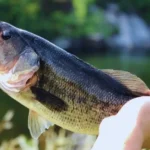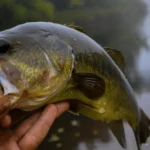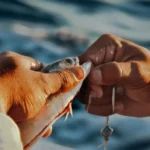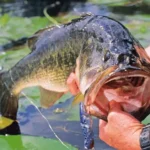For anglers seeking an environmentally conscious method of discarding their used fishing line, there are options available. You might be wondering how to recycle fishing lines. By recycling fishing lines, you can prevent them from causing harm to wildlife or ending up in landfills. It’s a simple and responsible way to dispose of them. In this article, we’ll show you how to recycle fishing lines and explain the benefits of doing so.
What is Fishing Line Recycling?
Reclaiming fishing bars is the process of transforming obsolete, used fishing lines into new products. By recycling fishing lines, we can prevent them from ending up in landfills or, even worse, in our oceans, where they can affect the fauna and cause environmental damage.
Why Should We Recycle Fishing Lines?
Reusing fishing rows is an essential part of fishing in an ethical way. When the fishing line is not thrown away correctly, it can hurt or kill animals like birds, sea turtles, and marine mammals. The animals can get caught in the line and be injured or killed.
Also, it can take up to 600 years for the fishing line to break down, so it will be in the environment for many years to come. We can stop this from happening and cut down on the amount of trash in our surroundings if we reclaim fishing ropes.
Can You Recycle the Fishing Line?
Fishing lines can be used again. Many companies that make fishing lines have programs where you can send them your old fishing line to be recycled. When the fishing line is recycled, it can be used to make new fishing lines or other fishing tools. Fishing bars should be thrown away in the right way because leaving them in the environment can hurt wildlife. Marine animals and birds can get caught in and broken by fishing lines that are thrown away, so reusing is an excellent way to get rid of them.
How To Recycle Fishing Line (In 15 Ways)
- Organize all of your used fishing lines.
- Remove any hooks, lures, or other attachments from the bar.
- Coil the rope into a neat bundle.
- Check the type of fishing line you have to see if it can be recycled. Monofilament rope is the most commonly recycled type of fishing rope.
- Locate a recycling bin or program in your area. Check with your local tackle shop or fishing supply store to find out if any monofilament recycling bins or mail-in programs are available.
- If there is a recycling bin, drop the bundle of fishing lines into the container.
- If there is a mail-in program, package the fishing line securely and mail it to the address provided.
- If no recycling bin or program is available in your area, consider starting one. Contact local authorities, fishing clubs, or conservation organizations for assistance.
- If you cannot find a recycling program or bin, dispose of the fishing line properly in a trash can or landfill.
- Do not throw a fishing rope into the water or onto the ground.
- Please spread the word about the importance of recycling fishing lines to fellow anglers and encourage them to do the same.
- Educate others about the harmful effects of discarded fishing lines on wildlife and the environment.
- Consider using biodegradable fishing lines or other environmentally friendly fishing gear.
- Participate in beach or river cleanups to help remove discarded fishing lines and other debris from the environment.
- Make recycling fishing lines a regular part of your fishing routine to help protect our waterways and wildlife.
What Happens to My Fishing Line After it is Recycled?
When recycled, the fishing line undergoes a cleaning procedure before being melted down and extruded into pellets. You may use the shots to make new fishing lines, as well as other fishing gear, including lures, spools, and tackle boxes.
The quantity of trash that ends up in landfills and the ocean may be decreased by recycling fishing gear. As a result, less virgin material is used in the production of new fishing lines, which is good for the environment.
Help the environment and encourage responsible fishing by taking part in fishing line recycling initiatives.
Types of Recyclable Fishing Lines
- Monofilament line: This kind of fishing line is often recycled. Nylon or other polymers are used to make this single-strand fishing line.
- Fluorocarbon line: This fishing line may be reused and recycled. It is a high-density line that is almost undetectable beneath the water, making it a favorite for fishing in transparent environments.
- Braided line: Not every recycling program will take braided fishing lines, but there are several that will. Braided lines are more vital and last longer because many strands are braided together.
- Lead-core line: Because of the potential environmental damage caused by lead, this fishing line is seldom recycled. Typical applications include trolling and fishing in deep water.
- Wireline: The presence of metal wire in this fishing line makes it difficult to recycle; hence it is seldom done.
Benefits of Recycling Fishing Line
- Environmental Protection: When a fishing line is not correctly disposed of, it can become a severe hazard to wildlife and the environment. Discarded fishing lines can entangle and harm animals such as sea turtles, birds, and marine mammals. Recycling fishing lines help prevent this harm, reducing the number of fishing lines in landfills or the environment.
- Resource Conservation: Recycling fishing stripes is another way to keep natural resources from being wasted. Instead of only using new materials to make new fishing lines, recycling lets people use things that would otherwise be thrown away. This cuts down on the need for new resources and makes fishing line production less harmful to the earth.
- Sustainable Fishing Practices: Recycling fishing ropes helps ensure the future of sustainable fishing by encouraging fishermen to be conscientious about how they dispose of their lines. Old or broken fishing ropes should be disposed of properly rather than thrown away or left behind. This contributes to a more sustainable fishing industry by reducing the quantity of discarded fishing lines in the natural environment.
- Cost-Effective Solution: Reclaiming fishing lines also provides a cost-effective solution for anglers to dispose of their old or damaged fishing line. Rather than purchasing new fishing line every time it wears out or breaks, anglers can recycle their old line and buy new line made from recycled materials.
- New Products and Materials: Outdoor furniture, planters, and even clothes may all benefit from being made from recycled fishing lines. This contributes to the growth of a circular economy and encourages the use of sustainable resources.
- Community Engagement and Education: Recycling fishing stripes can promote community engagement and education around responsible fishing practices and waste reduction. By working together to promote recycling and responsible disposal practices, we can help protect our environment and support sustainable fishing practices for generations.
Eco-Friendly Fishing Tips
- Catch and Release: Let the fish return to the water after you catch it. In this manner, you may experience the excitement of the catch without negatively impacting the fish or their environment.
- Use Barbs-less Hooks: Barbless hooks make it easier to release fish and cause less harm to the fish. They also reduce the chances of accidentally injuring yourself while handling the fish.
- Properly Dispose of Fishing Lines: Improperly discarded fishing lines can entangle and kill fish and other marine life. Always dispose of your line properly in designated bins or recycling programs.
- Use Biodegradable or Natural Bait: Plastic lures and non-native live bait may be particularly destructive to aquatic ecosystems. Using a natural or biodegradable trick, like worms, is better for the environment.
- Know Your Limits: Knowing the local fishing laws and bag limitations is essential. Don’t take more fish than you need, and don’t waste what you do catch.
- Use a Non-toxic Lure: Some fishing lures contain harmful chemicals that can pollute the water and harm aquatic life. Opt for non-toxic baits instead.
- Clean Up After Yourself: Always leave the fishing area clean and litter-free. Pack out all trash, including fishing lines and hooks.
Conclusion
In conclusion, knowing how to recycle fishing lines is an integral part of responsible fishing practices. You can help save animals from danger and safeguard the environment by recycling your old fishing line. Do your bit to keep our waterways clean by inquiring about recycling programs from manufacturers of fishing lines or outdoor specialty stores in your area. Together, we can make a difference by learning how to recycle fishing lines.
F.A.Qs
How can I recycle my fishing line?
Fishing line recycling depends on where you reside. Recycle your old fishing line with certain fishing line producers or outdoor merchants. Recycling initiatives may be offered by local fishing clubs or conservation organizations. Fishing lines may be recyclable at a local recycling center or transfer station.
What types of fishing lines can be recycled?
Most fishing lines, including monofilament, fluorocarbon, and braided, can be recycled. Check the recycling program’s fishing line requirements.
How do I prepare my fishing line for recycling?
Recycle fishing lines by removing hooks, lures, and other attachments. Next, breeze the bar onto a spool or paperboard. It’ll be easy to carry.
What happens to the recycled fishing line?
A recycling plant cleans, melts, and pelletizes fishing lines. New fishing lines, lures, and gear may be made from these pellets.
Why is it important to recycle fishing lines?
Recycling fishing lines protects animals and the environment. Recycling fishing lines saves marine creatures and birds from entanglement. Reusing fishing line instead of making it from virgin materials conserves natural resources.











